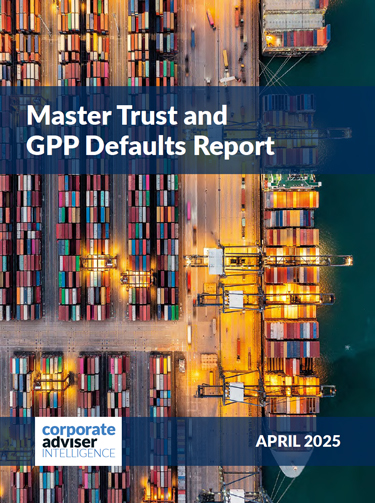Employee assistance programmes (EAPs) are facing growing pressure, as rising demand exposes cracks in service delivery. EAPs are now expected to meet more complex needs and providers and employers alike are struggling to balance increased usage with cost control. As concerns about quality surface and media attention intensifies, industry experts are calling for clearer communication around what EAPs are truly designed to deliver and how they should evolve to remain effective.
Criticism
Concerns over EAP quality emerged last year as Health Assured faces an ongoing British Association of Counselling and Psychotherapy (BACP) probe following a BBC report alleging missed referrals and understaffing, claims the provider denies.
HCML NED and consultant Pamela Gellatly explains that the EAP provider operates on a per-employee pricing model that worked well when service usage was low. Many EAPs also rely on low-cost, low-usage models embedded in products like insurance, often offering limited sessions.
She says that as mental health awareness grew during and post the pandemic, so did demand creating a surge in utilisation that affected profitability, leading some providers to cut call times, reduce treatment referrals, and put pressure on staff, resulting in turnover, recruitment issues and more complaints.
Gellatly notes that the entire sector has felt the impact and with rising and more complex mental health needs, she says EAPs must adapt how they assess and deliver care to meet evolving expectations.
Industry experts say there is a misalignment of expectations in relation to EAPs as many employees do not understand exactly what they are and what they are intended to deliver. Legal & General (L&G) group protection head of product & proposition James Walker, explains that EAPs are often mistaken for crisis services.
He says: “The goal is to provide appropriate support to prevent small problems from becoming big issues, like everyday work stress or relationship difficulties escalating into medical problems.”
He notes that EAPs, when viewed as part of a wellbeing culture, can lead to great outcomes for both people and business, but “it’s our job, as an industry, to help make it happen.”
He adds that since the start of L&G’s partnership with Spectrum.Life, it has focused on helping intermediaries and clients with education, outcomes reporting, and bespoke data-driven employee communication strategies.
Medicash head of marketing Andy Abernethy admits that some criticism of EAPs is fair, noting: “Low awareness, poor engagement, and delays in access have created scepticism. But that’s only part of the story.”
He also agrees that the bigger issue is misunderstanding what EAPs are for. He says: “They’re not full mental health services. They’re designed to offer ‘in the moment’ support—helping people manage immediate personal or work challenges and guiding them to further help when needed.
“They should sit at the heart of any wellbeing strategy but they need to be clearly communicated and actively promoted. If people don’t understand or trust the service, they won’t use it. We need to shift from scrutiny to solution.”
Regarding the broader perception of the industry, EAPA chair Karl Bennett criticises much of the external commentary on platforms like LinkedIn. These posts, he suggests, create uncertainty and may deter people from seeking help.
He says: “If anybody is deterred from using their EAP service because of an ill-informed, speculative comment… that in itself is the negative aspect of this, not the news that was reported.”
Usage & pricing
Usage is rising sharply, but providers are under pressure to maintain service quality while managing the costs, which are expected to increase.
HCML charges based on usage rather than a per capita basis, except where it’s an added-value product. HCML provides services like counselling, CBT, EMDR, and clinical psychology.
According to Gellatly: ”We rarely get complaints. However, if a client isn’t paying enough for the volume or service needed, the EAP can’t meet the demand, and complaints will arise. It’s important to ensure clients understand the full range of issues that can arise and price the service accordingly.”
Bennett notes: “No other industry I know sees demand go up while clients still expect to pay less.”
This disconnect is creating challenges, as some organisations invest in strong support for their workforce, while others treat EAPs as a secondary service to be delivered at the lowest cost.
Maintaining service quality comes with fixed costs, particularly in staffing. Bennett emphasises: “If we want BACP-accredited counsellors, we have to pay them what they’re worth. That’s non-negotiable.”
More usage leads to more clinical hours, higher infrastructure demands, and increased investment. Yet providers are routinely asked to deliver more for less. In a competitive market, underbidding to win contracts is common, but Bennett warns: ”Usage keeps going up, but prices keep going down. Something’s got to give.”
Confidentiality adds another challenge, as employers only receive aggregate usage reports and don’t see the individual outcomes. Bennett explains: “We see the lives changed but we can’t show employers that. Confidentiality means they never see the impact.”
This can make it harder for organisations to justify cost increases, even when engagement metrics clearly show higher demand. Meanwhile, providers face increasing difficulty sustaining service levels without adequate financial support.
It seems that the sustainability of EAPs depends on employers recognising that higher usage should come with appropriate investment.
Standalone v integrated
When comparing standalone EAPs to integrated ones, the key differences lie in service quality, flexibility, and the level of holistic support offered.
Walker said that integrated EAPs within broader benefits, like L&G’s group income protection, offer a more holistic approach to employee wellbeing. He explains that such integration provides a comprehensive service, including “unlimited in-the-moment mental health support” and short-term counselling where appropriate.
He believes this service, when combined with an ecosystem of prevention, early intervention, and rehabilitation services, allows for tailored, proactive support that goes beyond what standalone services typically provide.
But Bennett highlights the flexibility of standalone EAPs and notes that while integration might offer structured support, “there shouldn’t be any difference whether it’s integrated as part of a healthcare plan or a benefit service… the service that person receives should be exactly the same.”
He adds that standalone services can be more adaptable in certain situations, like during periods of organisational change, offering more immediate flexibility in terms of the support provided.
But Gellatly says many companies are moving toward a more integrated approach, explaining that the “standalone EAP is no longer providing what the corporate needs. We have recently seen requests for a more joined-up approach.”
Abernethy underscores the efficiency of integrated EAPs, particularly in creating a seamless user experience. “By embedding EAPs within broader health and wellbeing benefits, employees don’t have to navigate multiple providers or platforms.”
He further highlights that integration leads to better data insights and more proactive wellbeing interventions, improving both employee engagement and overall support.
Model
As demand for more personalised and accessible mental health support grows, some are questioning whether EAPs will shift from being bundled “free” or “added value” services to a pay-per-use model. However, the consensus among providers suggests this would come at a cost, both financially and in terms of impact.
Walker argues that moving to a pay-per-service model is unlikely within group protection settings. Bundling EAPs into insurance propositions spreads the cost across many employers, keeping premiums competitive.
He explains: “Providing the EAP as an optional feature would increase quoted premiums, potentially also causing the premiums to become taxable,” which makes the overall proposition less attractive to employers.
Gellatly says the real issue is not whether EAPs are paid for separately, but how they are valued. She warns that free or low-cost models can lead to reduced quality if buyers prioritise price over outcomes.
She says: “Customers who buy on price without understanding the impact on quality are likely to have problems.”
Abernethy highlights the confusion and inefficiency that can result when employees unknowingly have access to multiple EAPs through various providers. This overlap complicates communication and data tracking. Rather than defaulting to a pay-per-use model, he advocates for more targeted access, giving employers the option to add EAPs where needed to avoid duplication.
He cautions that rigid pay-per-service models “risk reducing uptake and widening health inequalities.” Instead, his approach blends core support services with broader online wellbeing tools, ensuring support is accessible without sacrificing impact.
Effectiveness & engagement
Meanwhile, employee engagement with EAPs faces key barriers such as awareness, stigma, and lack of trust according to experts. Abernethy points out that more than a quarter of employees don’t know about their company’s EAP or how to use it, emphasising the need for “proactive education” and “training managers to confidently guide employees.” He also notes that stigma remains a barrier, with employees concerned that asking for help might be seen as a weakness or fearing their confidentiality could be compromised.
Gellatly notes that employees need services that go beyond just relationship or bereavement support. She said: “They need to be assessed broadly to understand what’s really causing or contributing to their feelings,” ensuring they receive tailored, relevant help.
Walker adds: “All of these issues can be overcome through good communication.”
Effective management of EAP services is equally important. Grid spokesperson Katharine Moxham underscores the need for employers to carefully assess the EAP providers they choose. This is especially important since multiple group risk products might offer different EAP options.
She adds that employers need to understand what they’re getting with their purchase, suggesting that advisers can help navigate these choices to ensure the right fit for the workforce.
Moxham also highlights the value of anonymised reporting from EAPs, which can offer insights into trends and challenges in the workplace, allowing employers to make more informed decisions.
However, she warns that EAPs may not always be suitable for employees with more complex mental health needs. In such cases, other resources like private medical insurance or group income protection may be necessary.
She adds: “This isn’t just a tick-box exercise; it’s about making sure it’s effective. We need to ensure it’s helping, not just in terms of wellbeing but also in supporting businesses to stay on top of issues.”





